Video of the Week:
Pothos and Philodendron: Easy Care Houseplants
Vegetables:
Tomato Test: Fruit Size
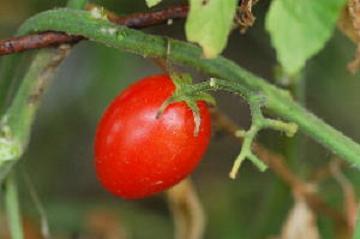
However, there is a caveat that must be considered when trying to interpret this test.
This is two years of data. Although two years worth of data is better than a single year, more is always better as differing environmental conditions can have a significant impact on yield from year to year. A variety that does very well under certain conditions, may not do well under less favorable conditions. Other varieties may be more forgiving and yield well under a wider range of conditions.
The top ten varieties for fruit size are listed below. We have included the top 10 for 2013, the top for 2014 and the top when these two years are combined. We will only consider those tomatoes which were grown both years. We did not include cherry tomatoes or other small fruited types such as Roma. Weight is given in ounces per individual fruit. We had 16 varieties that met these criteria and yet the same 10 varieties were the top ten in fruit size for both years. That doesn’t happen often.
2013
No. Variety Weight
1 Amana Orange 13.0
2 German Queen 11.4
3 Beefmaster 7.8
4 Big Beef 7.7
5 Florida 91 7.4
6 BHN 961 7.0
7 Red Bounty 6.9
8 Black Krim 6.8
9 Celebrity 6.5
10 Scarlet Red 6.4
2014
No. Variety Weight
1 Amana Orange 10.0
2 BHN 961 8.8
3 German Queen 8.5
4 Red Bounty 7.9
5 Beefmaster 7.8
6 Florida 91 7.6
7 Black Krim 7.0
8 Scarlet Red 6.9
9 Celebrity 6.6
10 Big Beef 6.3
2013 & 2014
No. Variety Weight
1 Amana Orange 12.2
2 German Queen 10.4
3 Beefmaster 7.7
4 BHN 961 7.5
5 Florida 91 7.5
6 Big Beef 7.4
7 Red Bounty 7.1
8 Black Krim 6.8
9 Celebrity 6.5
10 Scarlet Red 6.5
Note that when we combined both years, we took the total weight of fruit for both years and divided it by the total number of fruit picked. Therefore, years with a higher yield would have more of an effect than those with a lesser yield. In this case, 2013 had much better yields than 2014. (Ward Upham)
Fruit:
Cloning Apple Trees
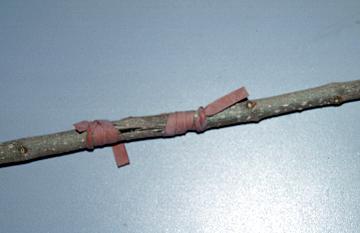
Apple trees grown from seed usually have small and inferior quality fruit. If you want a tree exactly like the parent, you must propagate that tree vegetatively. In the case of apples, this usually means grafting. Apple trees are actually quite easy to graft, even for novices. Don't be afraid to try even if you haven't grafted before. The step that needs to be done at this time of year is the choosing and cutting of scion wood or small branches that will be grafted on top of a rootstock.
See the accompanying article in this newsletter on how this is done. However, if you don’t have an existing tree to graft onto, you will need to plant a rootstock this year for grafting onto next. Fruit trees are normally grafted (or budded) onto specially selected rootstocks. These rootstocks usually reduce tree size. For example, a tree that normally would reach 25 feet tall will only reach 10 feet if it is grown on a certain rootstock. Dwarfing rootstocks also allow apples to bear fruit a year or more earlier.
A tree on its own roots normally takes 5 to 7 years before it will bear. Semi-dwarf trees bear in 4 to 5 years, and dwarf trees bear in 3 to 4 years. Unfortunately, not all dwarfing rootstocks are well adapted to Kansas. Semi-dwarf trees usually are a better choice for us. Note that rootstock reduces tree size, not fruit size. Therefore, a Golden Delicious tree that only reaches 8 feet tall due to a dwarfing rootstock, will bear the same size fruit as a Golden Delicious tree that is 25 feet tall.
Most nurseries only sell trees that are already grafted. A company that does sell rootstocks is Raintree Nursery, Morton, WA, (360) 496-6400, http://www.raintreenursery.com/Rootstocks/
Another is Cummins Nursery, (865) 233-3539, http://www.cumminsnursery.com/rootstocks.htm though there is a minimum shipping and handling fee of $20. It is also possible to buy a tree from a local nursery and graft your clone into it. This will give you one tree that produces two different apples. One disadvantage of this method is that it is possible to prune off the special clone by mistake in later years.
This information does not include the details of grafting or budding or subsequent care.
The Missouri Extension Service has an excellent publication on grafting at
http://extension.missouri.edu/explorepdf/agguides/hort/g06971.pdf as well as a second publication on budding at http://extension.missouri.edu/explorepdf/agguides/hort/g06972.pdf. Be sure to practice your cuts on wood you prune off in March. After you do about 100 cuts, you will start to get the hang of it. (Ward Upham)
Ornamentals:
Caddo Sugar Maples
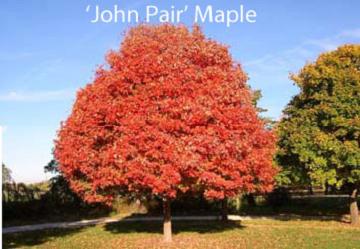
Another interesting characteristic of caddo maples is that they tend to retain their leaves in the winter and therefore have been suggested as screens or for use in windbreaks.
Dr. John Pair, the late director of the Horticulture Center, selected and released two Caddo maples over 10 years ago. Both these selections color early and have consistent good red fall color. Drought tolerance and resistance to leaf scorch and leaf tatter are exceptional. However, neither will do well in a heavy clay soil that is frequently saturated. These trees can be damaged or killed if planted in wet sites.
The first selection, ‘Autumn Splendor’, has the traditional sugar maple growth pattern and needs plenty of room to mature. ‘John Pair’ is smaller and more compact and more likely to fit a residential landscape. This tree is also noted for a dense, uniform crown. If you are in the market for a sugar maple, consider these before making a final decision. (Ward Upham)
Miscellaneous:
Plants Recommended for Kansas
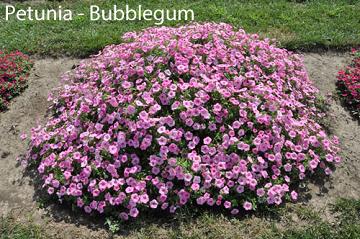
http://www.hfrr.ksu.edu/p.aspx?tabid=731
We also have images of hundreds of the following:
Varieties of iris and daylilies found in the University Gardens Collection Gardens
Annual flowers recommended for Kansas (Prairie Star)
Perennial flowers recommended for Kansas (Prairie Bloom)
(Ward Upham)
Collect Scion Wood Now
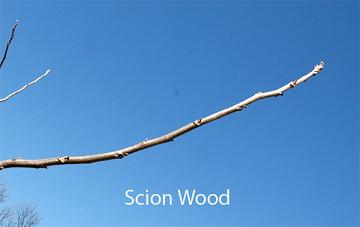
- Scions should be cut from one-year-old wood.
- Buds should be prominent and widely spaced. Water sprouts work well for this. Water sprouts are twigs that grow straight up from a major branch.
- Inner bark should be light green and the wood creamy white.
- Best scions have more wood than pith; small diameter wood often has wide pith.
- Older bearing trees produce poor scions unless pruned heavily. The best scions are toward the top of the tree. You may need a pole pruner even for small trees.
- Cut shoot into 6-8 inch pieces having at least 3 buds per stick.
- The best scion is often the basal piece.
- Always discard the terminal (the end piece).
- Store in the refrigerator in a plastic bag with moist paper towels.
If you are unfamiliar with grafting but would like to learn, the University of Missouri has an excellent publication at http://extension.missouri.edu/explorepdf/agguides/hort/g06971.pdf. Practice your technique on wood you pruned off in March. Try doing about 100 cuts. (Ward Upham)
Use a Planting Calendar
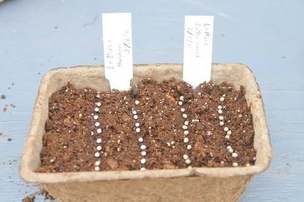
Below are examples of some common vegetables grown for transplants and a recommended date for seeding. Dates are Saturdays as this is when many homeowners have the most free time. The dates are not set in stone, and a week earlier or later will not ruin the plants. Also, you may want to seed a week or two earlier if you are in southern Kansas and possibly a week later if you are in northern Kansas. Keep notes on how well the transplants did so you can tweak the planting schedule. Your conditions may result in plants that need a bit more or a bit less time. (Ward Upham)
Crop Seeding Date Transplant Date
Cabbage, Broccoli & Cauliflower February 7 April 4
Lettuce (if you grow transplants) February 7 April 4
Peppers March 21 May 16
Tomatoes March 28 May 9
Local Seed Sources
A couple of weeks ago, we asked for anyone selling seeds in Kansas to contact us with their information. Following are the companies who provided that information.
Clinton Parkway Nursery
4900 Clinton Parkway (corner of Clinton Parkway & Wakarusa)
Phone Number: (785(842-3081
E-mail: clintonparkway@aol.com
In store sales only.
Prepackaged seed only: pre-packaged Renee's Garden.
Transplants: ...a wide variety and assorted sizes!
Jackson's Greenhouse & Garden Center, Inc.
1933 NW Lower Silver Lake Road
Topeka, KS 66608
785-232-3416 fax 785-233-6348
www.jacksonsgreenhouse.com
hort68ksu@gmail.com
We have 60+varieties of tomatoes, 60+varieties peppers, much more.
Seeds from Italy
PO box 3908
Lawrence, KS 66046
Phone: 785-748-0959
Fax: 785-748-0609
Web site: www.growitalian.com
Skinner Garden Store, Inc.
4237 NW Lower Silver Lake Road
Topeka, KS 66618
785-233-9657
info@skinnergardenstore.com
www.skinnergardenstore.com
In store sales only.
Everything we sell is prepackaged, but we can special order many thing in larger quantities.
We sell all kinds of transplants.
TLC Nursery and Outdoor Living
1000 S. 10th St. Independence, KS 67301
Phone: (620( 331-8301
E-mail: jjones@Livetlc.com, twila@livetlc.com
Website: www.livetlc.com
Will ship and do in-store sales
Sells prepackaged and custom packaged seed and transplants
(Ward Upham)
Contributors: Ward Upham, Extension Associate
 RSS Feed
RSS Feed
